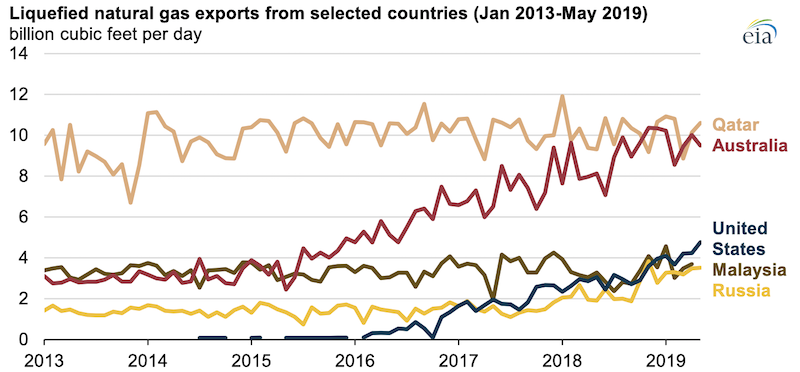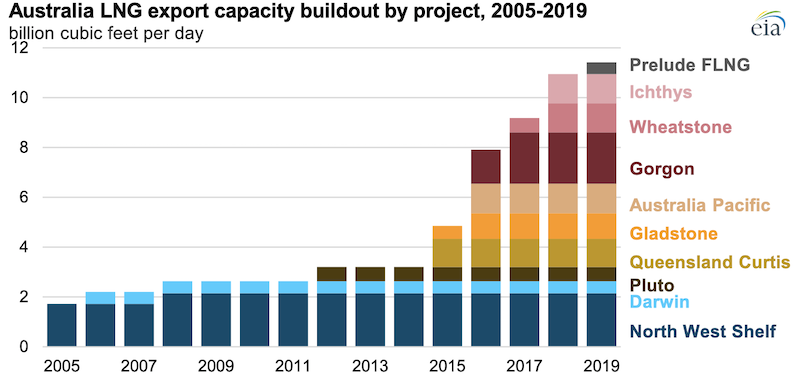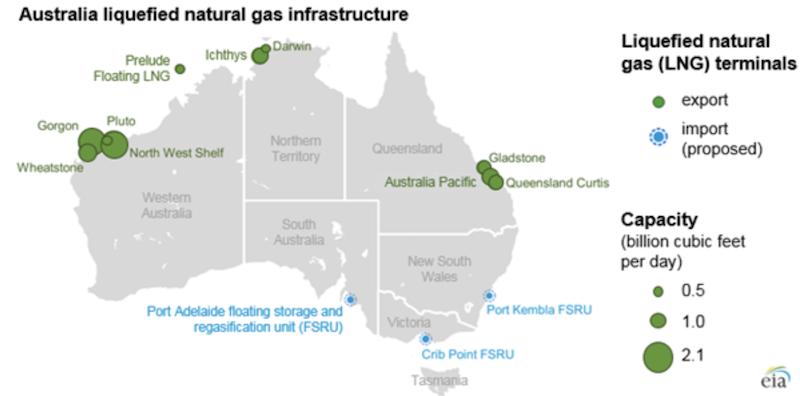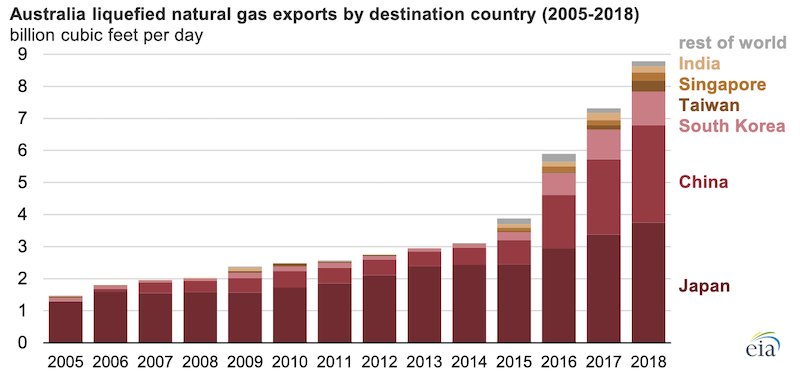Australia is on track to surpass Qatar as the world’s largest liquefied natural gas (LNG) exporter, according to Australia’s Department of Industry, Innovation, and Science (DIIS). Australia already surpasses Qatar in LNG export capacity and exported more LNG than Qatar in November 2018 and April 2019. Within the next year, as Australia’s newly commissioned projects ramp up and operate at full capacity, EIA expects Australia to consistently export more LNG than Qatar.

Australia’s LNG export capacity increased from 2.6 billion cubic feet per day (Bcf/d) in 2011 to more than 11.4 Bcf/d in 2019. Australia’s DIIS forecasts that Australian LNG exports will grow to 10.8 Bcf/d by 2020–21 once the recently commissioned Wheatstone, Ichthys, and Prelude floating LNG (FLNG) projects ramp up to full production. Prelude FLNG, a barge located offshore in northwestern Australia, was the last of the eight new LNG export projects that came online in Australia in 2012 through 2018 as part of a major LNG capacity buildout.

Starting in 2012, five LNG export projects were developed in northwestern Australia: onshore projects Pluto, Gorgon, Wheatstone, and Ichthys, and the offshore Prelude FLNG. The total LNG export capacity in northwestern Australia is now 8.1 Bcf/d. In eastern Australia, three LNG export projects were completed in 2015 and 2016 on Curtis Island in Queensland—Queensland Curtis, Gladstone, and Australia Pacific—with a combined nameplate capacity of 3.4 Bcf/d. All three projects in eastern Australia use natural gas from coalbed methane as a feedstock to produce LNG.

Most of Australia’s LNG is exported under long-term contracts to three countries: Japan, China, and South Korea. An increasing share of Australia’s LNG exports in recent years has been sent to China to serve its growing natural gas demand. The remaining volumes were almost entirely exported to other countries in Asia, with occasional small volumes exported to destinations outside of Asia.
For several years, Australia’s natural gas markets in eastern states have been experiencing natural gas shortages and increasing prices because coal-bed methane production at some LNG export facilities in Queensland has not been meeting LNG export commitments. During these shortfalls, project developers have been supplementing their own production with natural gas purchased from the domestic market. The Australian government implemented several initiatives to address domestic natural gas production shortages in eastern states.

Several private companies proposed to develop LNG import terminals in southeastern Australia. Of the five proposed LNG import projects, Port Kembla LNG (proposed import capacity of 0.3 Bcf/d) is in the most advanced stage, having secured the necessary siting permits and an offtake contract with Australian customers. If built, the Port Kembla project will use the floating storage and regasification unit (FSRU) Höegh Galleon starting in January 2021.
Principal contributor: Victoria Zaretskaya

Follow us on social media: